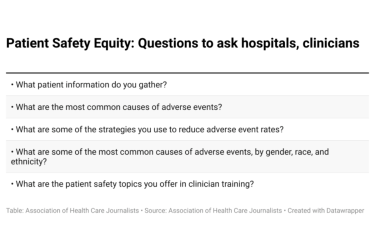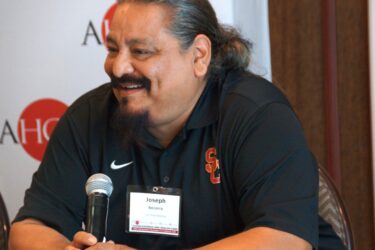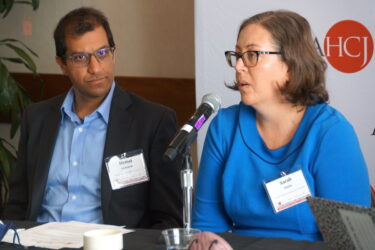
The Seattle Times last month profiled tribal leader Brian Cladoosby, a longtime leader of Swinomish Indian Tribal Community, which has a reservation on Puget Sound. He also is serving a second year as president of the National Congress of American Indians.
The story, by Times’ outdoor editor Brian J. Cantwell, opens with a scene of Cladoosby fishing for king salmon on the Skagit River. The piece goes on to explore Cladoosby’s outspoken defense of salmon habitats and tribal sovereignity, his colorful, sometimes controversial leadership style and his willingness to go to court to win his battles.
“Cladoosby, 56, has become among the most prominent Indian leaders in America,” Cantwell writes. “His rise coincided with more than 25 years of Northwest tribes’ financial gains after courts and Congress gave Indian casinos a green light in 1988. Resulting newfound wealth — and key legal victories in fishing and water rights that it helped finance — have boosted political and cultural influence for tribes across the Northwest.”
Now the powerful leader and his tribe are taking on a new challenge: tooth decay.
Oral disease is rampant in many tribal communities, and dental care can be hard to find. More than eight out of 10 American Indian and Alaska Native children between 6 and 9 years of age have had a history of tooth decay compared to 45 percent of children in the general U.S. population, according to federal findings.
Over the past decade, Alaska Natives have begun using technically trained midlevel dental providers known as dental health aide therapists (DHATs) in a push to address the problem. After completing two years of training and serving three-to-six month preceptorships, DHATS offer a range of dental procedures including exams, screenings, X-rays, fillings, sealants and extractions.
On July 3, Cladoosby announced plans to bring the same model to his Swinomish community.
“We as Indians have long faced an oral health crisis and the crisis is only growing,” Cladoosby said in a statement. “But there just aren’t enough dentists in Indian country to address this crisis. The Swinomish dental clinic sees more than twice the number of patients per provider as the national average. That’s why we are expanding the Swinomish dental team through the proven solution of training and employing dental health aide therapists.”
In a shared news release, Jacqueline Johnson Pata, executive director of the National Congress of American Indians, offered praise for the initiative.
“Tribes are sovereign governments, well-equipped to bring the required resources to their tribal communities,” Pata said. “The effort launched by the Swinomish today can and should be duplicated by tribes all across the country to better ensure that their members receive the dental care they need.”
The DHATs consult with supervising dentists via telephone and computer when providing their services.
But organized dental groups have fought hard against the therapist model. They say only dentists should be allowed to drill cavities and extract teeth.
The American Dental Association, which joined Alaska’s dental society in an unsuccessful lawsuit to stop the DHATs from working on tribal lands in the state, had no immediate response to the Swinomish announcement. But the news was applauded by nonprofits including the W.K. Kellogg Foundation and the Pew Charitable Trusts, which have worked to expand the use of midlevel dental providers.
What are oral health groups and tribal leaders in your state saying?









